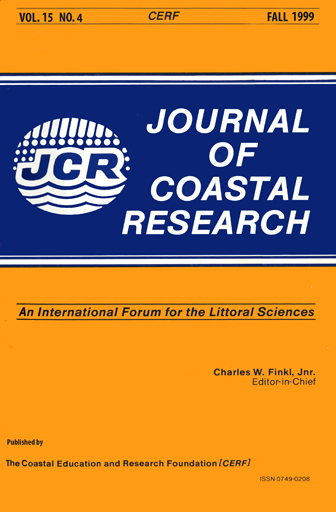Mid Holocene Palaeoenvironments from Lake Nhlange, Northern Kwazulu -Natal, South Africa
Keywords:
South Africa, molluscan assemblages, coastal evolution, vibracoring, Quaternary sea levels.Abstract
Palaeoenvironments are described from 5 vibracores taken from within Lake Nhlange, the largest waterbody within the Kosi system which comprises a series of lakes linked to the sea via a large tidal sand-flat. The mid to late Holocene lagoonal palaeoenvironment has undergone minimal sedimentation since the Last Glacial Maximum (18,000 BP, oxygen-isotope stage 2). Shelf-margin gravity slumping has transported typical shallow water, intertidal molluscan assemblages into deeper subtidal environments. The lake bathymetry exhibits a drowned Last Glacial Maximum palaeofluvial channel topography, preserved by the post-Last Glacial Maximum (Flandrian) transgression which formed a large coastal dune barrier, trapping the lakes behind it. The palaeoestuary mouth was located at Bhanga Nek, until approximately 3,000 BP, but has been relocated 13 km north, approximately 1,500 BP, to where it now maintains an open inlet through the coastal barrier. An abundant Holocene molluscan assemblage combined with detailed sedimentological descriptions indicate that the conditions within Nhlange have changed over the last 5,000 years from a deep coastal estuarine lagoonal system, with free tidal exchange to a predominantly freshwater lake. The molluscan assemblages indicate a subtropical, temperate lagoonal environment similar to Durban Bay (prior to anthropogenic changes) with a number of species including Paphia textile indicating a warmer climate. A modern analogy of the palaeoenvironment would be that of the inside edge of Bazaruto Archipelago, Mozambique.


